There are many sources of information on the difficulty of NZ rivers so it’s useful to understand the Classification System. The descriptions in italics are from American Whitewater. We give you the definition of each Class and who might be paddling it.
Class I
Fast moving water with riffles and small waves. Few obstructions, all obvious and easily missed with little training. Risk to swimmers is slight; self-rescue is easy.
Who?
Anyone with appropriate safety gear and sense – great rivers for learning.
How’s that feel?
Cruisy and uneventful would be a good description. Moving water with small waves that don’t challenge.
How’s it look?
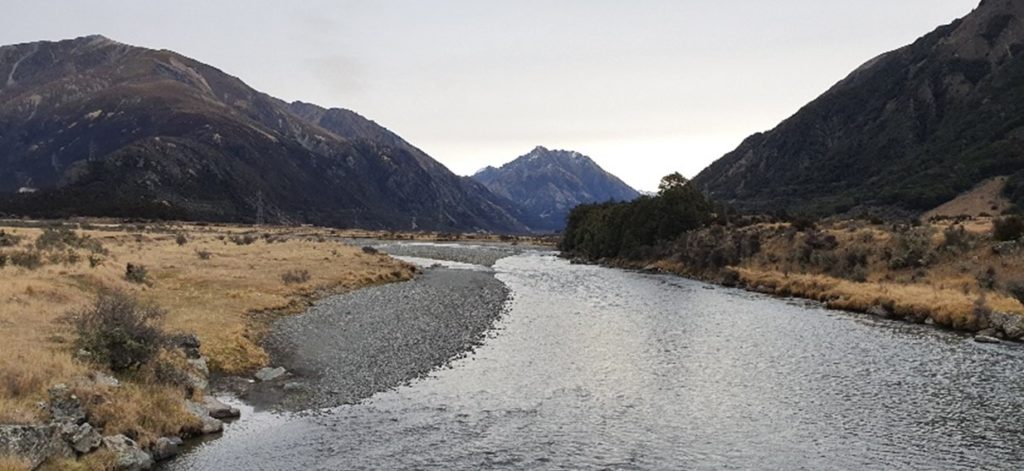
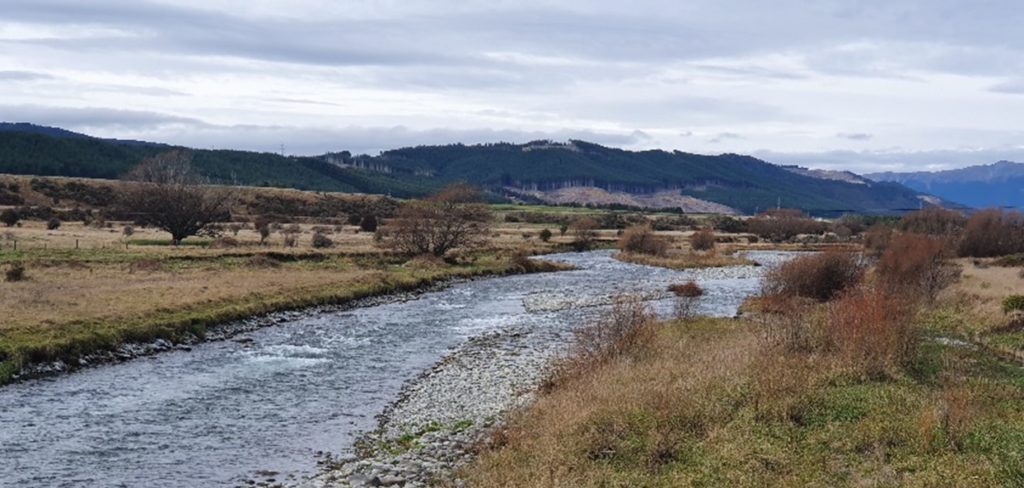
Class II
Straightforward rapids with wide, clear channels which are evident without scouting. Occasional manoeuvring may be required, but rocks and medium-sized waves are easily missed by trained paddlers. Swimmers are seldom injured and group assistance, while helpful, is seldom needed. Rapids that are at the upper end of this difficulty range are designated “Class II+”.
Who?
Learners and those not interested in the adrenaline rush of more turbulent waters. There are plenty of great river trips that only require grade II paddling skills.
How’s that feel?
Easy rapids, waves up to a metre tall that are readily seen, and wide channels that can be discovered without scouting. Some manoeuvring may be required but there’s no real grief if you miss a line. A good place to find some eddies to practice in.
How’s it look?
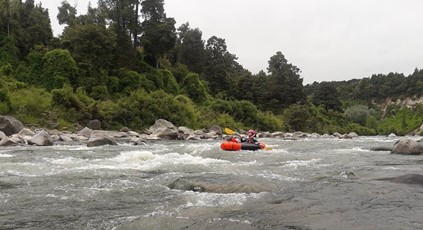
Class II water is the place to practice all your moves and strokes before advancing to Class II+ and III. A lot of packrafters charge through Class II in a mad rush to progress to Class II+ or III. Choose hard lines and make late moves around obstacles to catch micro eddies and ring all the learning you can from Class II.
Class II+
In NZ we like to understate things so we have quite a variance in what constitutes Class II. Rafting Companies will tend to overstate and classify a rapid by its grading at high flow to attracts punters and kayaker bravado will tend in the opposite direction.
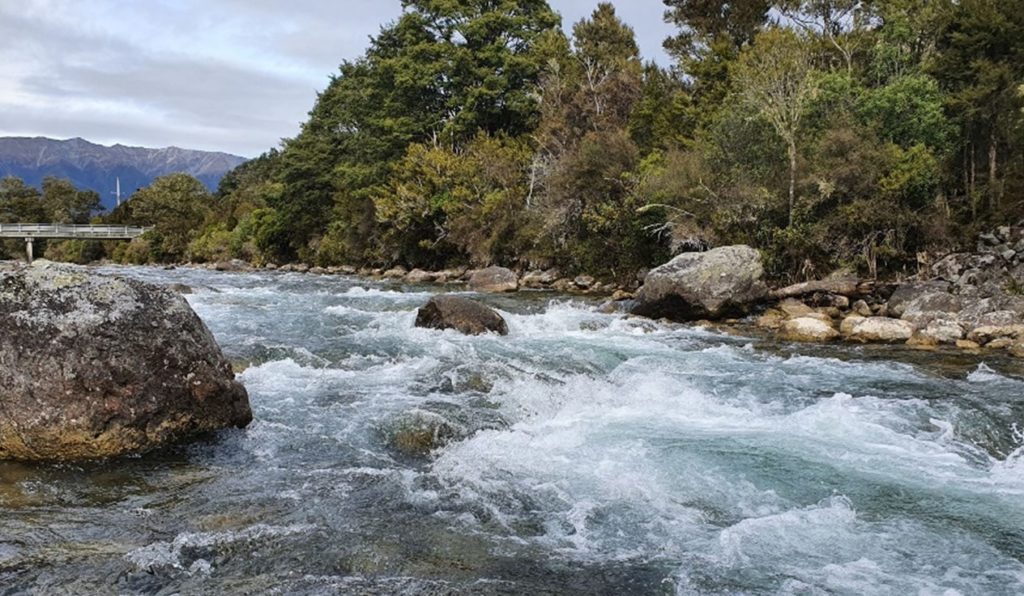
Class III
Rapids with moderate, irregular waves which may be difficult to avoid and which can swamp an open canoe. Complex manoeuvres in fast current and good boat control in tight passages or around ledges are often required; large waves or strainers may be present but are easily avoided. Strong eddies and powerful current effects can be found, particularly on large-volume rivers. scouting is advisable for inexperienced parties. Injuries while swimming are rare; self-rescue is usually easy but group assistance may be required to avoid long swims. Rapids that are at the lower or upper end of this difficulty range are designated “Class III-” or “Class III+” respectively.
Who?
Advanced Packrafters with well-developed river reading skills and a decent bag of tricks in the paddle strokes department. Paddling with a team they can rely on. Typically a crew of three will have a decade of experience between them at a minimum.
How’s that feel?
Waves up to a metre and a half and narrow passages that require manoeuvring and test your balance. Plenty of excitement and quick decision making required. Eddying frequently to assess lines and moving across current and in and out of eddies. You’re missing the fun, and the point, if you’re just bombing the straight line. To coin a Mark Oates phrase you should be “boating not floating”.
How’s it look?

(Note safety set by the big hole at top left).

Technical Class III
This sub Class warrants mention as packrafts can often tackle tight creeks at low flows that are quite technical in nature with lots of manoeuvring required.

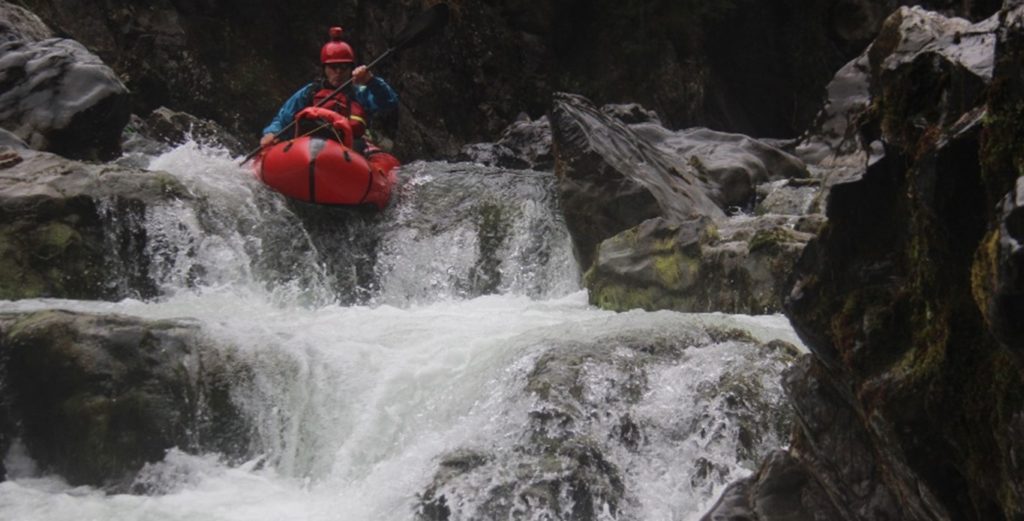
Class IV
Intense, powerful but predictable rapids requiring precise boat handling in turbulent water. Depending on the character of the river, it may feature large, unavoidable waves and holes or constricted passages demanding fast manoeuvres under pressure. A fast, reliable eddy turn may be needed to initiate manoeuvres, scout rapids, or rest. Rapids may require “must” moves above dangerous hazards. Scouting may be necessary the first time down. Risk of injury to swimmers is moderate to high, and water conditions may make self-rescue difficult. Group assistance for rescue is often essential but requires practiced skills. A strong eskimo roll is highly recommended (for kayaks). Rapids that are at the lower or upper end of this difficulty range are designated “Class IV-” or “Class IV+” respectively.
Who?
Teams of highly skilled and experienced paddlers, perhaps with a kayak borne guide along for added safety.
How’s that feel?
Exhilarating – if you’ve got the skills and made all the moves…or..
Waterlogged, aching and wondering what’s broken or worse – if you should have portaged. Remember no one ever drowned on a portage. You’re in a packraft – it’ not a solid whitewater kayak so you have less protection and more chance of a swim. You’re thinking “what would it feel like to swim this” and “who would rescue me from that hole?” You’ve discussed the rapid with your crew and set safety. If you’re not thinking that way then you’re certainly not experienced enough to paddle it. A bit terrifying if you understand the risks.
How’s it look?
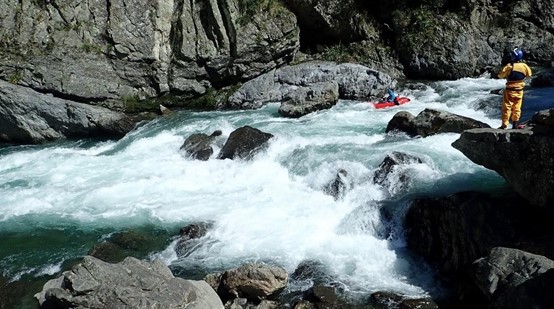
The Upper Rangitikei run is Class III with a few Class IV rapids. The Boomer Rapid is the crux with nasty must-avoid holes beyond the observer and at river left. The line through the rapid avoids a number of very hazardous holes and rocks. The element of danger, difficulty of setting safety and must-make nature of the line pushes this into Class IV.
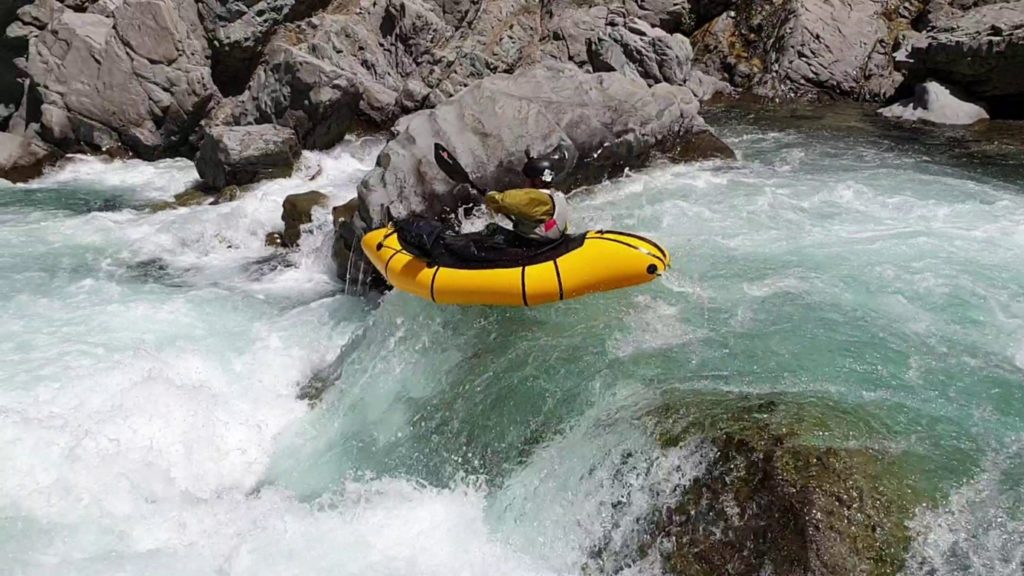
At high flows the drop is smaller but the hole becomes a place where packraft nightmares are born. A nasty syphon on river right must be avoided.
For completeness Class V and VI are detailed below – but mere mortals in Packrafts won’t be going near Class V.
Class V
Long, Extremely long, obstructed, or very violent rapids which expose a paddler to added risk. Drops may contain; large, unavoidable waves and holes or steep, congested chutes with complex, demanding routes. Rapids may continue for long distances between pools, demanding a high level of fitness. What eddies exist may be small, turbulent, or difficult to reach. At the high end of the scale, several of these factors may be combined. Scouting is recommended but may be difficult. Swims are dangerous, and rescue is often difficult even for experts. A very reliable eskimo roll, proper equipment, extensive experience, and practiced rescue skills are essential. Because of the large range of difficulty that exists beyond Class IV, Class 5 is an open-ended, multiple-level scale designated by class 5.0, 5.1, 5.2, etc… each of these levels is an order of magnitude more difficult than the last. Example: increasing difficulty from Class 5.0 to Class 5.1 is a similar order of magnitude as increasing from Class IV to Class 5.0. difficult rapids, narrow passages, turbulent water that requires precise maneuvering and sends hearts racing.
The Rangitikei Gorge ending at River Valley is a Class IV run with some Class V at high flow.
Huka Falls is now considered Class IV / V and illustrates the significant difference that flow makes (i.e. compare a low volume Class IV with safe run out to a high volume Class IV ending in a drop).
Many West Coast steep gradient rivers are Class V in their upper reaches. Ace kayakers like Barny Young are adopting Packrafts and pushing the limits on these rivers.

Class VI
These runs have almost never been attempted and often exemplify the extremes of difficulty, unpredictability and danger. The consequences of errors are very severe and rescue may be impossible. For teams of experts only, at favourable water levels, after close personal inspection and taking all precautions. After a Class VI rapids has been run many times, its rating may be changed to an appropriate Class 5.x rating.
Think Tree Trunk Gorge, once class VI, which has taken numerous lives and is now (in part) graded Class V because extremely capable kayakers have abseiled in and paddle parts of it.